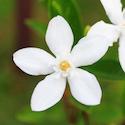Powdery mildew is a common group of fungal species that infect a wide variety of plants, including our jasmine plants. The symptoms of this disease are not difficult to identify, as the first clinical signs of these infections are, circular and irregular white spots on the surface of the leaf, which quickly spreads its growth on both sides of the leaves, leading to those leaves to wilt. Usually, powdery mildew starts infecting the lower leaves of our jasmine plant and makes its way up to the upper tissues of the plant. Those leaves often appear twisted, distorted, with a dry look, covered with white powder and ultimately wilted. Powdery mildew infection thrives on dry and a bit damaged foliage, being particularly infective in high humidity, warm temperatures and in low light conditions. Powdery mildew infection is rarely fatal, although, if left unchecked, it can cause a nasty situation around your jasmine plant, that could compromise its integrity. Powdery mildew is caused by a variety of closely related fungal species belonging to the Erysiphaceae family. The most common species that comprise powdery mildew are, Golovinomyces cichoracearum, Erysiphe cichoracearum, Erysiphe polygoni, and Microsphaera penicillata, but, there are many more, compiling a total of 700 different powdery mildew fungal species. Powdery mildew fungi are obligated and biotrophic parasites, which require a living host to infect in order for it to grow and further reproduce.
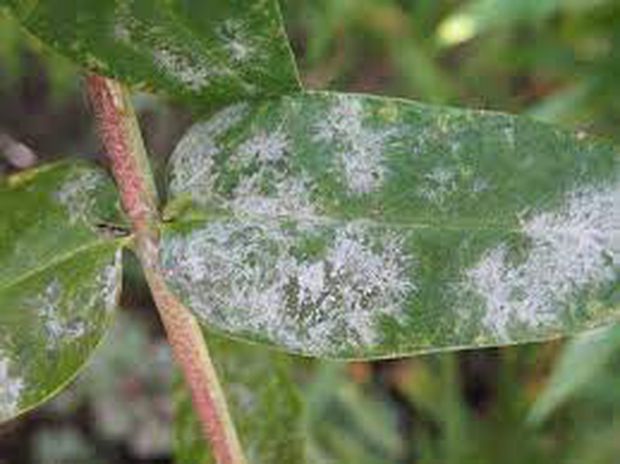
Powdery mildew life cycle
As stated above, powdery mildew fungal species need of a living host to guarantee their fate and be able to grow, in fact, accessible hosts need to be available for them to survive all year round. They are able to produce special resting spores that allow them to push through the winter and other extreme seasons ensuring their survival. Those specialised spores are their vehicle of dispersal and actually, those spores built up, are the responsible of creating that white powdery appearance in the surface of the leaves and stems in our jasmine plant. Those spores are normally carried by the wind and other living pests to new and adjacent hosts, reason why, if your Stephanotis is infected with powdery mildew, is likely that, if left untreated, other plants around it, will also get infected. Powdery mildew fungi, commonly grow externally around the leaves surfaces, however, it can also grow on flowers, flower buds and stems. Usually, powdery mildew is restricted to one or two hosts and the infection occurs by the absorption of the plant nutrients through their highly specialised cells named haustoria, which, penetrate through the epidermis of the leaves. For their optimal growth and survival, powdery mildew, require humidity in the environment, but under hard conditions, they are able to germinate and grow in the absence of water. Average temperature of 70 F together with partial shade, are the optimal conditions for its maximum growth, however, extreme heat temperatures above 90 F, would affect the viability of those spores, compromising the progression of the fungi.
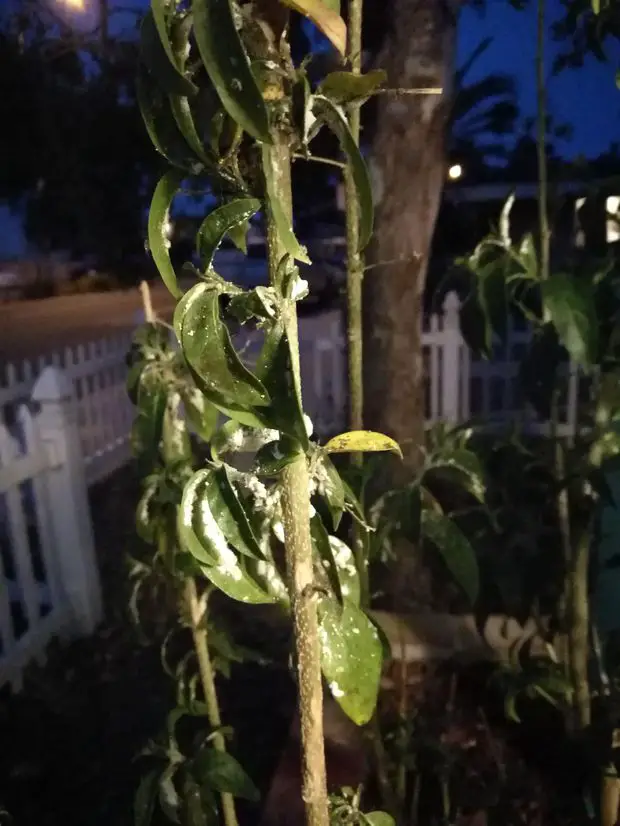
Treatment
Powdery mildew is a very common fungal infection in our Stephanotis jasmine plant. Although, as with everything, earlier stages of infections are easier to treat and manage, but don’t fear, if your plant is looking stunned and quite unwell as there are different effective treatments against these fungi infections and certified organic options are also available. Let’s dive a bit deeper into those available options.
Milk
Using a simple ingredient that everyone has at home, such as, milk, can be the solution to your powdery mildew infection problem in your Madagascar jasmine plant. Spraying a milk solution over your jasmine plant in the early stages of the fungal infection, can be pretty efficacious. The way milk works as an anti fungal in powdery mildew infection is by two competing and conflictive reasons. One is that, the main components of the milk, such as, whey, lactoferrin and lactose would stimulate the microbial growth of benign bacteria and yeast that would compete and counterbalance the harmful fungal population of the powdery mildew species growing in the surface of our jasmine plant. At the very same time, another chemical reaction takes place and that is, that once direct sunlight hits the milk sprayed on those leaves, oxygen free radicals are released from the lactoferrin and lactoperoxidase proteins to deter the fungal microbial population. Once sunlight hits those free radicals, they become really unstable, damaging the cells, spores and hypha of the powdery mildew fungi. The protocol to follow to make and use your own milk anti fungal solution is, to mix equal parts of water and milk or 1:1 ratio. Both, whole cream and light milk are effective, as well as, powder milk. Once you have your milk solution made, make sure you spray your whole plant thoroughly, including stems, leaves and flowers. Do so, for about twice a week, until the symptoms go away, pay special attention to storms and heavy rain, as they will wash it away from your Stephanotis jasmine plant.
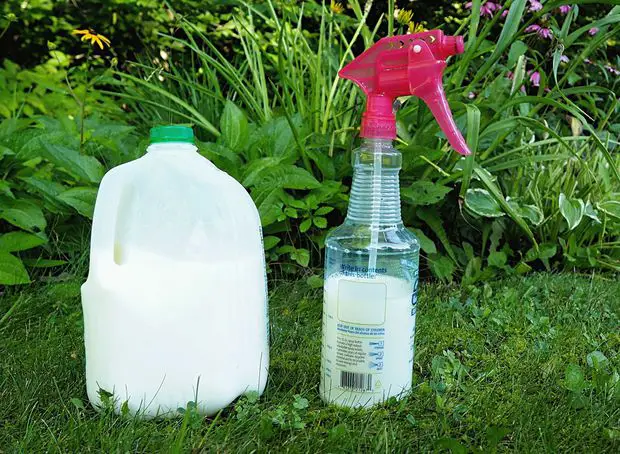
Baking Soda (Sodium Bicarbonate)
This is, the common household baking soda (sodium bicarbonate) that can make of an excellent homemade, organic powdery mildew solution. The nature of the powdery mildew infection is, to spread throughout a plant surface with pH readings lower than 7.0. Because sodium bicarbonate is an alkaline chemical, it raises the pH of the leaves above the powdery mildew’s chemical tolerance level. As a consequence of this effect, the powdery mildew spores that would land on the jasmine leaves or flowers, die, mitigating the fungi infection. Sodium bicarbonate as effective treatment against powdery mildews, has a few shortcomings given the nature of this chemical to adhere to the surface of the leaves and stems, hence the need to use it in combination with some liquid soap or horticultural oil for optimal and effective results, especially if applied early in the stages of the disease. The standard recipe is, mixing a tablespoon of baking soda/sodium bicarbonate, a teaspoon of horticultural oil and/or a teaspoon of liquid soap with a gallon of water. Spray this solution on your Madagascar jasmine plant for about two weeks. One piece of advice here is, not to over do it beyond the two to three weeks mark, as it too much of the baking soda accumulates in the soil where our Stephanotis is planted, other chemicals, such as, calcium and magnesium will be removed and this will prevent the absorption of iron and other essential nutrients and our plant will deter and develop deficiencies.
Apple cider vinegar
Apple cider vinegar is another commonly found item in your pantry, which is, mainly, diluted acetic acid, highly effective in controlling powdery mildew infection. Simply, mix 2 to 3 tablespoons of apple cider vinegar, (containing 5% acetic acid), and mix it with a gallon of water. If you use a higher concentration of acetic acid, might be more effective in a short term, but in these higher concentrations of vinegar can also burn plants and kill them.
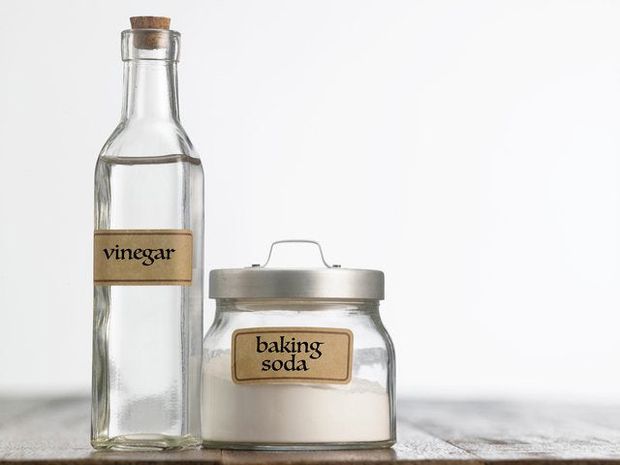
Neem oil
Neem oil is a vegetable oil, extracted from the seeds of the Neem tree (Azadirachta Indica), which grows in tropical areas. Its active and main ingredients are, azadirachtin and picrin, involved in provoking the effects against pests and infections. One important piece of information here, is that Neem oil won’t kill powdery mildew per se, but it will help in controlling the infection while in combination with other agents to ensure killing the spores of these nasty fungi. Neem oil needs to be diluted before its application to our jasmine plant foliage, otherwise, it will promote the leaves to sunburn. The way to make this reagent is by mixing 1 tablespoons of concentrated, cold-pressed neem oil and 1 teaspoon liquid soap/silica (potassium silicate) in one gallon of water. The only shortcoming here is that water and oil don’t mix well, for which, we need to make an emulsion of the virgin or cold pressed neem oil in the silica or liquid soap, to be able to be sprayed around your Stephanotis. My personal preference here is, using silica (potassium silicate) to emulsify the neem oil, as it provides some extra benefits for our jasmine plant, such as, increasing the tolerance to drought and other environmental stress by fortifying the stems in our plant, as well as, it coats the foliage of our Stephanotis making it less susceptible to fungal infections. Ideally this spray is applied around the foliage right after the sun sets, as the sun may burn the entire plant or seedlings if applied during the earlier hours of the day.
Also, it is recommendable to use gloves when handling these types of oils, as there have been some reports of allergies around the hands and forearms where the oil has been in contact with the skin. In terms of how often to apply it to minimise the powdery mildew infection, neem oil should not be applied for more than once a week for a period of a month for best results.
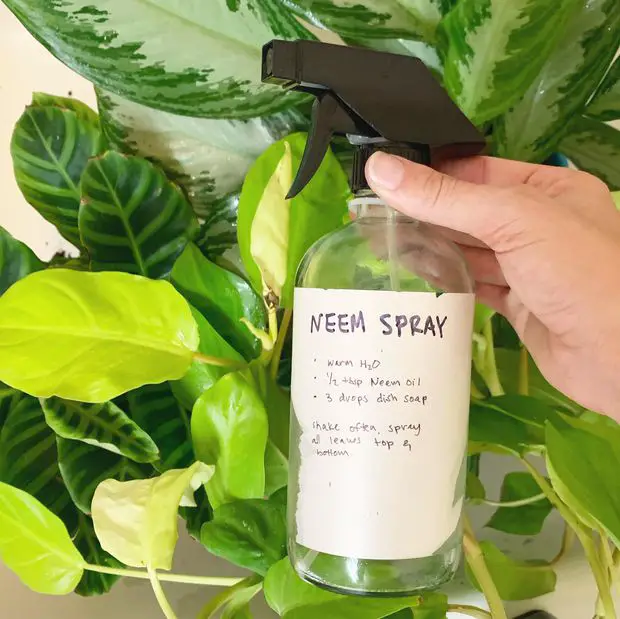
Conclusion
In my experience, to maintain fungi from growing and expanding and eventually developing a resistance to your home remedies, I would advice to alternate recipes every fortnight or a month, tops. Also, make sure to not over fertilise your Stephanotis, as this will prone it to fungal infections. Ensure your jasmine plant is separated and far away enough from other plants to help preventing those spores to quickly travel and infect the adjacent plants. Snip suspicious or early infected stems and leaves to preventing a nasty fungi infection, like everything around our jasmine plants, prevention of diseases is crucial.
